Information Sheets
Aluminum Gutter Spikes
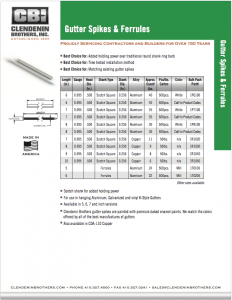
Aluminum Hidden Hangers
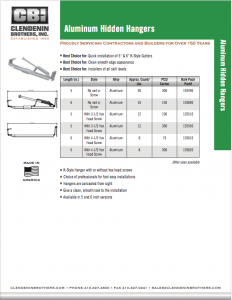
Aluminum Siding Nails
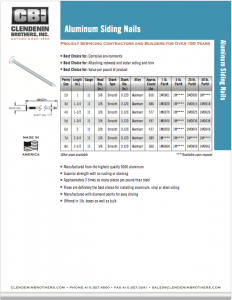
Aluminum Trim Nails
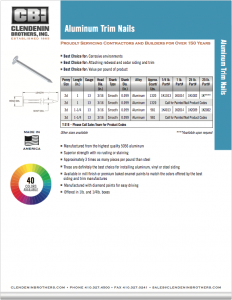
Copper Roofing - Ring Barb

Copper Roofing - Smooth
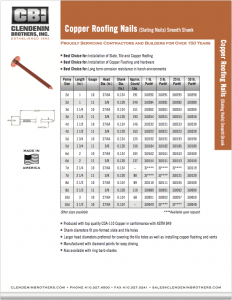
Stainless Roofing - Ring Barb
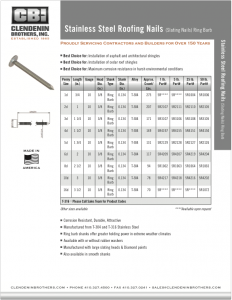
Stainless Roofing - Smooth
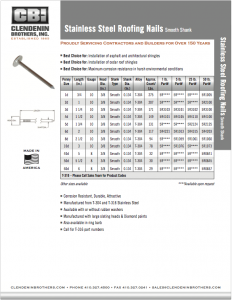
Stainless Coil Roofing
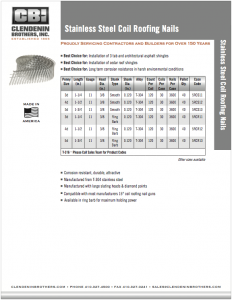
Stainless Common - Ring Barb
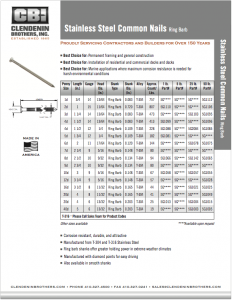
Stainless Common - Smooth
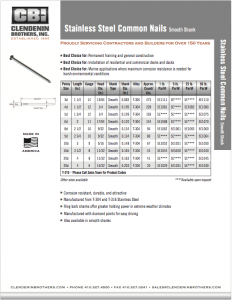
Stainless Finish Nails
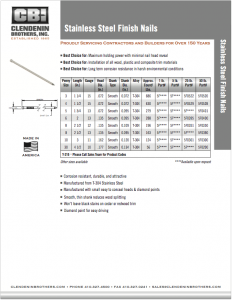
Stainless Painted Trim
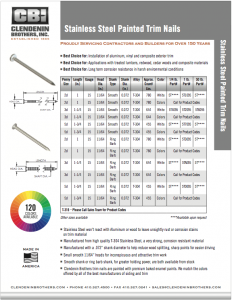
Stainless Shingle & Shake
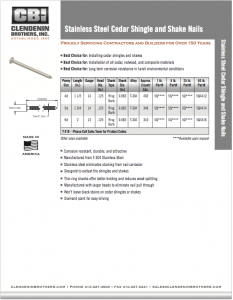
Stainless Square Deck Screws
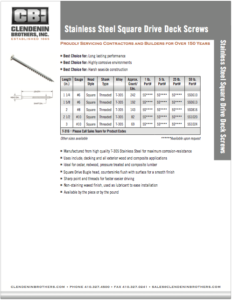
Stainless Square Trim Screws
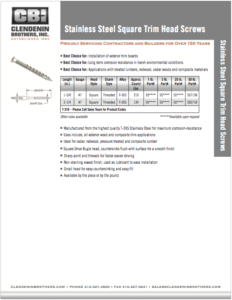
Stainless Wood Siding
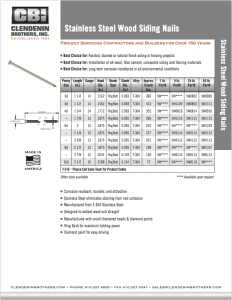
Aluminum is produced from one of the earth’s most plentiful ores. Once thought of as only a single metal and a costly one at that, it now constitutes an entire family of alloys and is the least costly (by volume) of all metals. Aluminum can be alloyed with other metals to produce suitable alloys for a wide variety of industrial and consumer goods. As a material for fasteners it has a great versatility and is coming more and more into its own with each passing year.
CHARACTERISTICS:
Fasteners of Aluminum now can equal and exceed the tensile strength of mild steel and at about 1/3 the weight. Aluminum is easily worked both hot and cold. It can be polished to a high luster and possesses high electrical conductivity. It is an excellent conductor of heat, it is non-magnetic, and will not spark like ferrous metals. It can be hardened by alloying, heat treating, and cold working. It has remarkable immunity to attack by acids and corrosive media.
USES:
Aluminum is widely used in the aircraft, architectural hardware, building products, household appliance, water systems, radio, television and eletronic equipment, chemical processing equipment, automotive applications, some types of marine applications, electrical connectors for power transmission, and for any application where its strength-to-weight ratio, durability, corrosion resistance and appearance are desirable.
Copper was one of the first metals to be worked by ancient humans, and it is still prized today for its electrical and thermal conductivity, as well as its soft malleable. It can be severely formed into useful articles embodying a very high resistance to corrosion and stress corrosion. It has a higher electrical conductivity than any of the non-precious metals and, therefore, is useful and necessary in many types of electrical applications. If plating is desired an excellent and durable surface will be produced.
Steel is made from Iron (element 26 (Fe)) that has been processed to remove impurities. Stainless Steels* are broadly defined as iron alloys containing from 12%-30% Chromium (element 24 (Cr)) and from 0%- 20% Nickel (element 28 (Ni)). These are further modified by additions of carbon and other minor elements, which contribute specific effects either to control mechanical properties or to improve corrosion resistance. The corrosion resistance of Stainless Steel is attributed to a surface phenomenon, called passivity. When oxygen comes in contact with the surface it forms an invisible film which acts to partially protect the underlying metal from rusting and corrosion.
The family of stainless steel is divided into three general classifications:
AUSTENITIC Stainless Steels make up the general group of the 18-8 (or 300 series). These are Chromium-Nickel Stainless Steels containing upwards of 8% Nickel. They are not hardenable by heat treatment, are non-magnetic for practical purposes (although they are slightly magnetic when in a work hardened state) and offer the greatest degree of corrosion resistance. Among these many grades are Type 302, Type 304, Type 305, and Type 316.
MARTENSITIC Stainless Steels contains from 12% to 20% Chromium. They are magnetic and hardenable by heat treatment. Type 410 and 416 are examples.
FERRITIC –these are also Chromium Stainless Steel alloys. They are magnetic and not hardenable by heat treatment. Type 430 is an example
Uses
There are almost as many uses for Stainless Steel as there are problems of corrosion, temperature and strength. Because of its high tensile strength, corrosion resistant qualities and ability to attain a mirror-like finish, it is one of the most versatile of all metals. Applications include its use in the food, transportation, building materials, and equipment industries to mention a few.
*Despite its name, Stainless Steel can corrode under certain conditions. Contact a trained metallurgist to learn about these conditions. In addition to conditions that will cause corrosion of the fastener, some installations can cause cosmetic staining, these can be minimized by using proper installation methods (use of non-ferrous driving device, not overdriving into wood) or additional processing (passivation to ASTM A380).
Composed of Copper (65-75%) and Zinc (25-35%), Brass is the most common Copper based alloy. Its uses are many since it is relatively inexpensive, is easily worked into any shape or form and possesses strength, toughness and good corrosion resistance. It is also used in applications for purely cosmetic reasons.
Silicon Bronze is the generic term used for various types of Copper-Silicon alloys. It possesses a high tensile strength superior to mild steel, has high resistance to corrosive influences such as extreme temperature, atmospheric conditions, water (fresh and salt), gases, and sewage. It is non-magnetic and has excellent machining and work characteristics. It is used in many applications including switchgear equipment, sewage disposal, marine applications, water meters, valves, plumbing, liquid and chemical handling equipment, food machinery, petroleum processing, and all application where exposure to the elements is a factor.
